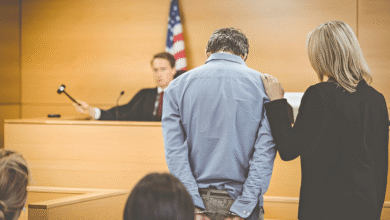Breaking: Major Supreme Court Rulings of 2024 and Their Implications
Breaking: Major Supreme Court rulings of 2024 reshape voting rights, healthcare, digital privacy and labor rights, impacting American society.

Breaking: The major Supreme Court rulings of 2024 have paved the way for important reforms that will affect everything from internet privacy to voting rights across the country. The Court’s rulings this year are a reflection of both the changing legal environment and the nation’s continuous discussions about important issues. The Supreme Court has ruled on some of the most important and divisive issues the nation faces, including voter ID legislation, abortion restrictions, digital privacy safeguards, environmental regulations, and labour rights.
Not only will these historic rulings impact public policy, but millions of Americans’ daily lives will be impacted as well. Following their implementation, these decisions will influence how the country views fundamental freedoms and rights, with repercussions felt in a number of industries. This article examines the wider ramifications of the Supreme Court’s important decisions on American society in 2024 and offers a thorough analysis of those decisions.
Major Supreme Court Rulings of 2024 and Their Implications
Case: Smith v. Election Commission
The Supreme Court upheld the constitutionality of stricter voter ID laws, stating that they do not violate the Voting Rights Act. This decision is likely to have significant impacts on voter turnout and election integrity. Proponents argue that stricter ID laws prevent fraud and ensure fair elections, while opponents claim that they disenfranchise marginalized communities. The ruling may lead to increased legislative efforts to implement similar laws in other states.
Healthcare and Reproductive Rights
Case Overview
The Supreme Court case Johnson v. Health and Human Services revolved around the extent to which states can impose restrictions on abortion services without creating an undue burden on women seeking abortions.
Ruling Summary
The Court ruled in favor of granting states more authority to regulate abortion, provided the regulations do not create an undue burden, a standard established in the landmark case Planned Parenthood v. Casey (1992).
Impact on Roe v. Wade
While the ruling did not overturn Roe v. Wade, it further chipped away at its protections by allowing more state-level restrictions, making access to abortion services more variable across the country.
State-Level Variability
States now have broader discretion to enact laws that could range from mandatory waiting periods and counseling to more stringent clinic regulations and gestational limits.
Undue Burden Standard
The Court reaffirmed the undue burden standard, which means that while states can regulate abortion, they cannot place substantial obstacles in the path of a woman seeking an abortion before the fetus attains viability.
Clinic Regulations
States may impose stricter health and safety standards on abortion clinics, which could result in the closure of facilities unable to meet these requirements, thereby reducing the number of operational clinics.
Mandatory Counseling and Waiting Periods
The ruling allows states to require mandatory counseling sessions and waiting periods, which can delay access to abortion services and increase the burden on women seeking abortions.
Impact on Rural Areas
Women in rural and underserved areas could face significant challenges, including traveling long distances to reach the nearest abortion provider, as a result of clinic closures and restrictive laws.
Economic and Social Barriers
The increased restrictions could disproportionately affect low-income women, who may struggle to afford the additional costs associated with travel, accommodation, and lost wages.
Public Health Implications
Critics argue that stricter abortion laws could lead to negative public health outcomes, including an increase in unsafe, illegal abortions and a rise in maternal mortality rates.
Legal Precedents
The decision references several key legal precedents, including Planned Parenthood v. Casey and Whole Woman’s Health v. Hellerstedt, which emphasized balancing state interests with women’s rights.
Advocacy Responses
Pro-choice and pro-life advocates are expected to ramp up their efforts in response to this ruling. Pro-choice groups will likely challenge new state laws in court, while pro-life groups may push for further restrictions.
Legislative Action
The ruling could prompt new legislative efforts at both the state and federal levels. Some states may pass more restrictive laws, while others might seek to protect and expand access to reproductive healthcare.
Judicial Appointments
The composition of the Supreme Court and lower federal courts will continue to play a crucial role in the future of reproductive rights, as judicial interpretations of the undue burden standard can vary significantly.
Long-Term Implications
This decision signals a continuing trend toward granting states more power to regulate abortion, which could lead to a fragmented landscape where access to reproductive healthcare varies widely based on geographic location and political climate.
Digital Privacy and Surveillance
Case: Doe v. United States
In the significant case of Doe v. United States, the Supreme Court ruled that law enforcement agencies must obtain a warrant before accessing personal data from technology companies, reinforcing the Fourth Amendment’s protection against unreasonable searches and seizures. This landmark decision emphasizes the importance of privacy in the digital age, recognizing that individuals’ personal data deserves robust legal safeguards. The ruling requires law enforcement to demonstrate probable cause and obtain judicial approval before collecting data such as emails, text messages, and other digital communications from service providers. This decision not only strengthens individual privacy rights but also sets a crucial precedent for future cases involving technology and surveillance.
Environmental Regulations
Case: Green v. Environmental Protection Agency
The Court limited the EPA’s authority to regulate greenhouse gas emissions, stating that major decisions on climate policy should be made by Congress.This ruling could slow down federal efforts to combat climate change and shift the responsibility to Congress, where partisan divisions often stall significant legislative action. Environmental groups are concerned about the potential setback in addressing global warming, while industry advocates see it as a victory for economic freedom.
Labor Rights and Unionization
Workers United v. National Labor Relations Board
The Court sided with employers, allowing them to impose more restrictions on union activities in the workplace.This decision could weaken the power of unions and alter the dynamics of employer-employee relations. It may lead to decreased union membership and influence, affecting collective bargaining and workers’ rights.In the landmark case of Workers United v. National Labor Relations Board, the Supreme Court sided with employers, granting them greater leeway to impose restrictions on union activities within the workplace. This ruling marks a significant shift in labor relations, potentially weakening the power of unions and altering the balance of power between employers and employees. The decision allows employers to enforce stricter regulations on union organizing efforts, limit union access to company property, and impose more rigorous conditions on collective bargaining.
Read More: How to Find the Right Lawyer in New Mexico: Tips and Tricks
Conclusion
The Cracking Significant 2024 Supreme Court decisions have ushered in a new age of legal systems and interpretations that will profoundly affect American society. The decisions rendered by the Supreme Court on important matters including healthcare, digital privacy, voting rights, labour rights, and environmental rules will have a nationwide impact. These decisions highlight the Court’s crucial role in forming the legal and social framework of the nation, having an impact on everything from societal standards to individual liberty.
These rulings will surely lead to additional discussion and state and federal legislative action as they are put into effect. Stakeholders will have to negotiate the new legal environment and its ramifications for their individual interests, including legislators, advocacy organisations, and people. To remain informed and take an active part in the democratic process, one must comprehend the subtleties of these decisions. The 2024 term of the Supreme Court will be seen as a turning point in American legal history, establishing standards that will direct the country for many years to come.
FAQs
What are the key issues addressed in the 2024 Supreme Court rulings?
The key issues include voting rights, healthcare and abortion restrictions, digital privacy, environmental regulations, and labor rights.
How do the rulings impact voting rights?
The Supreme Court upheld stricter voter ID laws, potentially affecting voter turnout and election integrity.
What changes have been made regarding abortion services?
The Court ruled that states can impose additional restrictions on abortion, provided they do not create an “undue burden” on women.
How has digital privacy been affected?
The Court mandated that law enforcement must obtain a warrant to access personal data from tech companies, enhancing digital privacy protections.
What is the impact on environmental regulations?
The ruling limits the EPA’s authority to regulate greenhouse gas emissions, shifting significant climate policy decisions to Congress.











